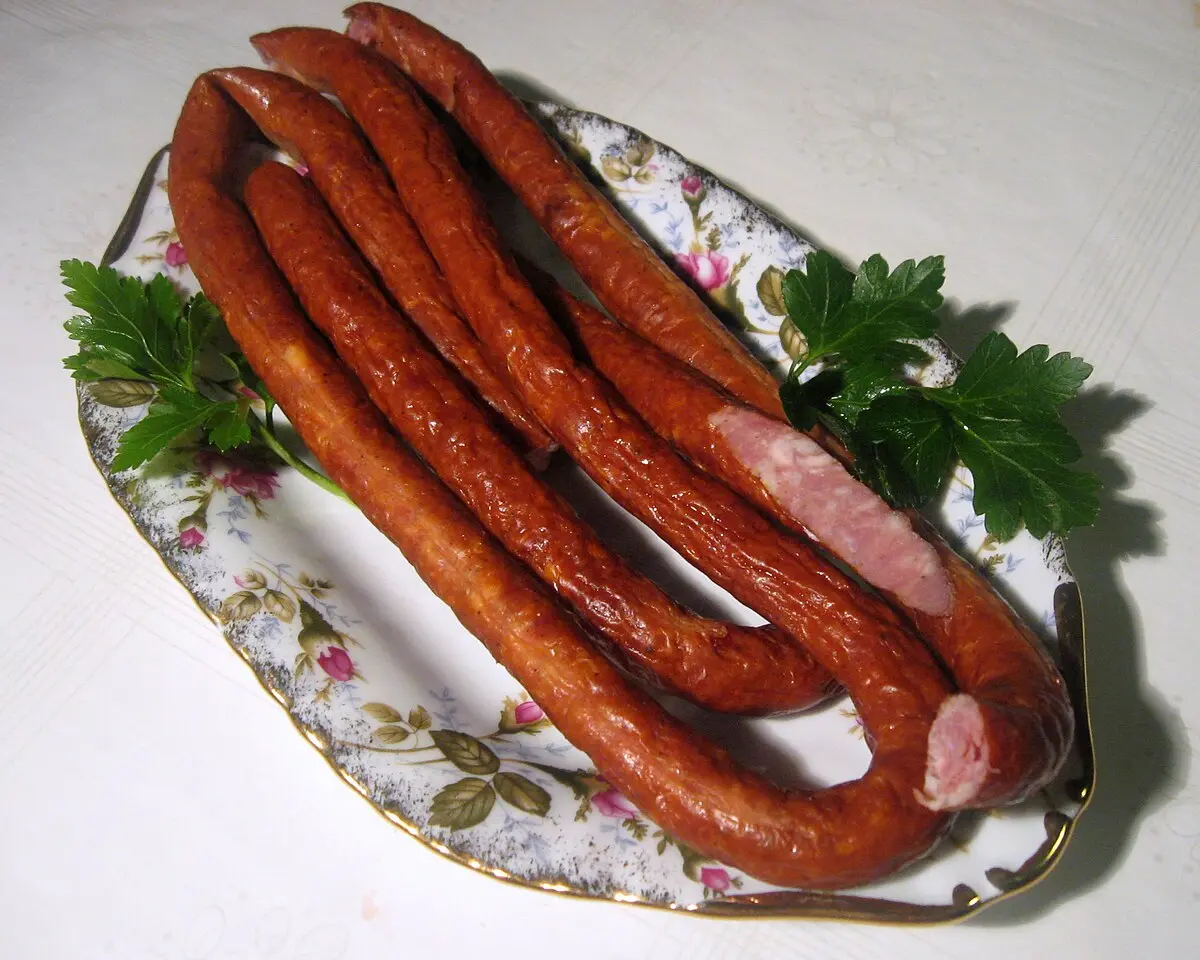Polish smoked meats, also known as kabanosy, are a beloved part of Polish cuisine. These long, thin sausages have a distinct smoky flavor and can be enjoyed in various ways. Whether you prefer them soft or very dry, kabanosy are a delicious treat that has been enjoyed in Poland for centuries.
The History of Kabanosy
The name kabanos comes from the word kaban, which was an old term used in eastern parts of Poland to refer to a young male pig fattened with potatoes for the purpose of making this type of sausage. The sausages were traditionally made using pork and various spices, resulting in locally distinct flavors that differed between regions of Poland.
Kabanosy have a long history and were known to have been produced since medieval times. Due to their long-lasting capabilities, they were considered perfect food for soldiers and travelers. The sausages were often hung around the neck, allowing horsemen to eat on the go without stopping for a food break. They were also popular among Polish Highlanders and used as hiking food. Smaller wraps of kabanosy were common among foot soldiers and travelers, as they could be easily carried and eaten while marching.
In modern times, kabanosy are made using different spices, resulting in a variety of flavors. The sausages come in two main types: a slightly softer type smoked for taste and a harder type smoked for a very long time, making them extremely long-lasting. Kabanosy can be categorized as hot or mild depending on the amount of spices used. They are typically eaten alone as an appetizer or served with cheese, and are often enjoyed cold.

Production and Varieties
Producing kabanosy requires a minimum of 150 grams of the best grade pork meat to make 100 grams of sausage. This is because some of the water contained within the meat evaporates during the long smoking process. Nowadays, almost every Polish manufacturer of kabanosy specifies the ratio of meat used on the packaging.
Kabanosy come in various flavors and spice levels. They can be seasoned with black pepper, chili, and other spices to create a range of taste experiences. Some manufacturers have also created sausages using the same process as kabanosy but substituting the traditional pork with other meats, such as chicken or turkey.
How to Enjoy Kabanosy
Kabanosy are commonly cut into bite-sized chunks and eaten cold as an appetizer or snack. They pair well with cheese and crackers, making them a popular choice for charcuterie boards. The sausages can also be sliced and used as a pizza topping, adding a smoky and savory flavor to the dish.
Distribution and Traditional Speciality Guaranteed
Kabanosy are mostly found in Southern, Central, and Eastern European countries, as well as in other parts of the world like Australia, New Zealand, South Africa, Israel, and Peru. In Israel, kabanos sausages are predominantly made of chicken and/or turkey due to dietary laws.
After Poland joined the European Union, there was a trade dispute with Germany over the name kabanos. In 2011, kabanosy staropolskie, a specific type of kabanosy made according to traditional recipes, was registered as a Traditional Speciality Guaranteed at the request of Poland. This status acknowledges the Polish origins of kabanosy and ensures that when using the name kabanosy staropolskie, the sausages are made according to specified time-honored recipes.
Polish smoked meats, or kabanosy, are a delicious and traditional part of Polish cuisine. With their smoky flavor and versatile uses, these long, thin sausages are enjoyed by people around the world. Whether you savor them on their own or pair them with other foods, kabanosy are sure to satisfy your cravings for a flavorful and unique snack.
If you want to know other articles similar to Polish smoked meats: a delicious tradition you can visit the Meats category.


Related Articles